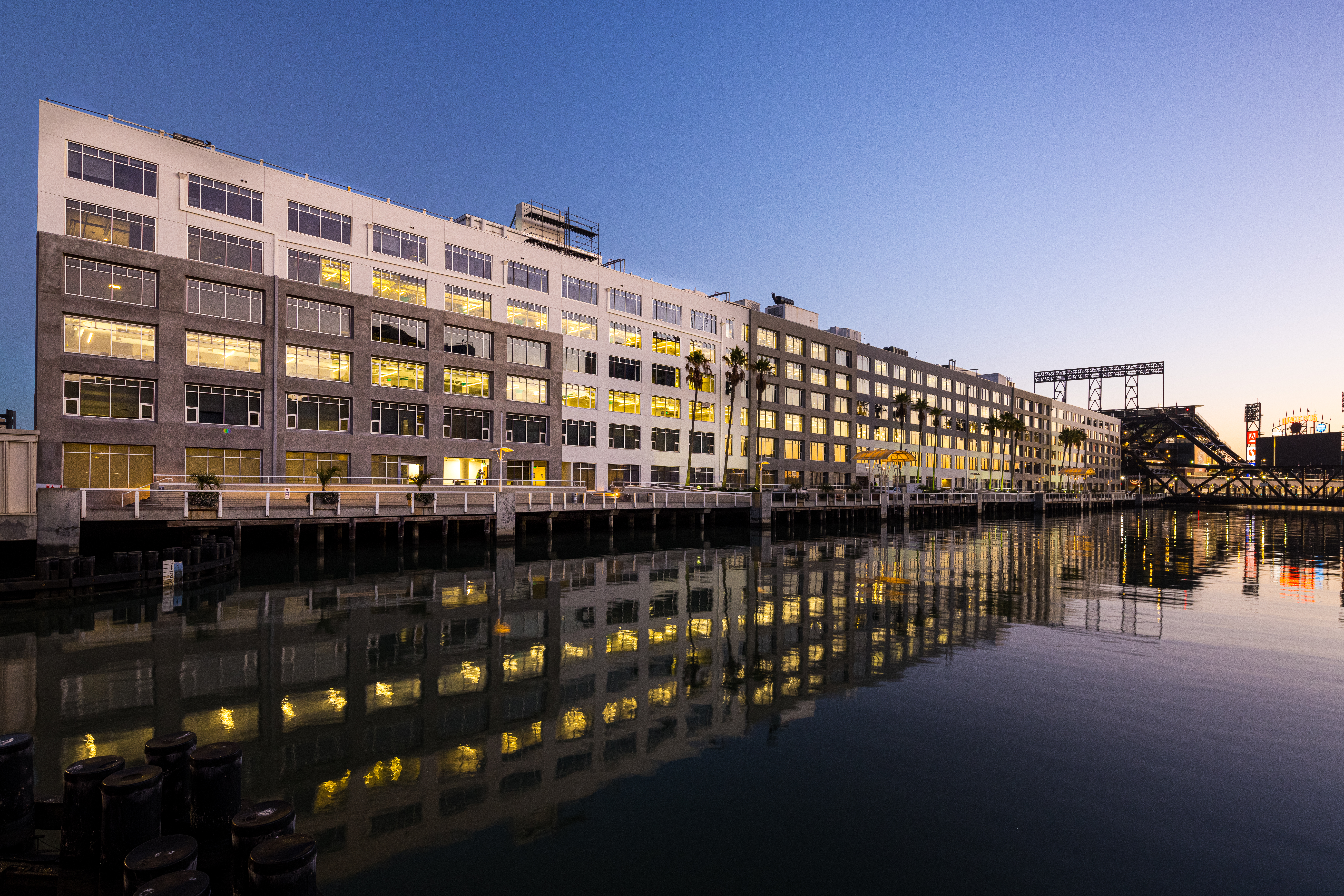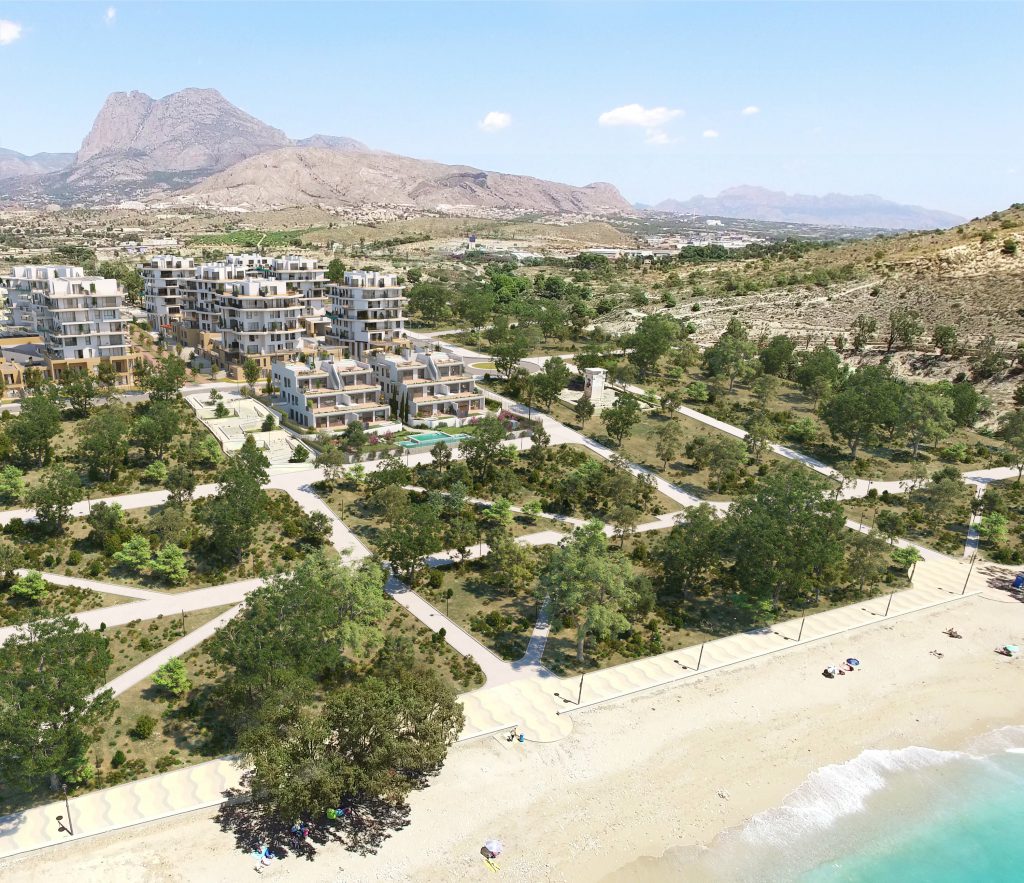BREEAM Very Good (57.2%)
Version: BREEAM ES communities
Architect: Adoras Atelier Architecture S.L.
Client: Quadratia Investment Partners S.L
Assessor Company: Urbanplan

About the Development
The Torres Sector is an urban development started in 2007 that, due to the effects of the subsequent economic crisis, was abandoned without being completed. In 2016 Quadratia Investment partners decided to reinvest in this development, commissioning ADORAS atelier architecture to design the new sector, which had to adhere to an orthogonal arrangement inherited from the previous planning.
The sector is located in an unique enclave on the Costa Blanca, in front of the Torres beach, in Villajoyosa, between the Hercules ravine and the Torres riverbed. In a space steeped in history, with vestiges of Roman culture that still persist in the sector, as is the case with the Roman funerary tower of Sant Josep, currently a Site of Cultural Interest. Located on a landscape of high quality and also high fragility, the intervention required the utmost respect for the site, which is why BREEAM certification became the best tool to carry out a respectful and environmentally sustainable intervention with the space.
Environmental Challenges
The main challenge was to break the orthogonal structure that marked the urban development into quadrangular plots, segmenting the sector into regular shapes without connection between them, which makes it difficult to connect the existing ecosystems.
As a solution to sustainable mobility, the central axis of the development is pedestrianized and also has a bike lane, which connects it with the city and gives access to the beach. In addition to promoting carbon-free mobility through the implementation of this measure, spaces for safe, interpersonal relationships are created.
Another challenge was to achieve landscape integration with the environment, for which a palette of existing colors in the landscape was developed, which would be present in the design and which would be connected with the local architecture using local materials and labor.

Through the ecological and landscape study of the sector, it was possible to establish a series of guidelines that would help the design of the space.
- To break with the orthogonal structure, a diagonal was marked that connected the Sant Josep tower and the Torres river bed, allowing not only the opening, improvement of the visuals, but also the connection of ecosystems, which otherwise would be closed.
- The public inquiry made us aware of the need to implement transport alternatives, highlighting the need for a bike lane that would connect the sector with the municipality.
- The use of green energies such as aerothermal energy in buildings for the air conditioning of homes and the generation of sanitary hot water.
- Improvement of security in common spaces, with the opening of large terraces in the houses and permeable enclosures.
- Incorporation of ornamental elements that help to avoid the heat island, as is the case of the canal.
- SUDS and drainage systems implementation for the rainwater collection and subsequent reuse in the irrigation of green areas.
The main challenge was to break the orthogonal structure that marked the urban development into quadrangular plots, segmenting the sector into regular shapes without connection between them, which makes it difficult to connect the existing ecosystems.
As a solution to sustainable mobility, the central axis of the development is pedestrianized and also has a bike lane, which connects it with the city and gives access to the beach. In addition to promoting carbon-free mobility through the implementation of this measure, spaces for safe, interpersonal relationships are created.
Another challenge was to achieve landscape integration with the environment, for which a palette of existing colors in the landscape was developed, which would be present in the design and which would be connected with the local architecture using local materials and labor.
Mr. Jseús Gallego CEO of Adoras Atelier Architecture
Hopefully our efforts in the design of ALLONBAY and these private and exemplary urban initiatives will definitely serve to raise awareness of the need to implement mechanisms to developments that have environmental certificates such as BREEAM.
Benefits of BREEAM
The BREEAM recommendations, both housing and urban planning, have guided the design of the building and green areas, providing sustainable and nature-based solutions. But it has been especially helpful in raising awareness for the use of reclaimed water in the sector to irrigate its green areas. This achievement has not been limited exclusively to the urban sector, but has risen to the municipal management of Villajoyosa which, in association with Quadratia Investment Partners, is negotiating the connection to the regenerated water network of the Bajo Algar irrigation community, to use this type of water in the irrigation of gardens and municipal green areas and in the interior urbanizations of the sector.

“Having a sustainable design guide like BREEAM allows you to incorporate new sustainability options to projects that add quality to it and were not previously considered.”
Mr. Jesús Jiménez Allonbay Architectural design manager at Adoras Atelier Architecture

The biodiversity of the site will be especially protected, establishing new ecological corridors through plantations of native species that allow the connection of existing ecological niches and the expanding of habitats.
The province of Alicante has a dry and Mediterranean climate with long periods of summer heat. It is interesting to create space and enjoyment in the outdoors that is protected from the high temperatures. Incorporating elements of water or shady trees or non-heat absorbent pavements into the design has been of great help to create outdoor rooms with a high degree of comfort.
Special care has been taken in the layout of the urbanization, increasing the living
spaces that allow a natural surveillance of the space.
What's Next?
The interest of clients after obtaining BREEAM certification has increased considerably, recognizing BREEAM as an internationally recognized quality certificate.
While no rewards have been received yet, as the first phases of the housing sector are currently being built, when construction is finished, it will be time to compete.
BREEAM case studies
Browse the latest case studies from BREEAM

Aligning ESG goals: LXP’s collaborative approach to Green Building Standards

Using BREEAM across an asset’s lifecycle: Hermes Business Campus

World’s largest real estate certification powered by BREEAM In-Use for Dutch investors Vesteda

Natural cosmetics company APIVITA awarded with BREEAM In-Use ‘Excellent’ rating for Athens headquarters ‘The Hive’

BNP Paribas Real Estate and Generali Real Estate achieve target of BREEAM In-Use V6 Excellent rating



